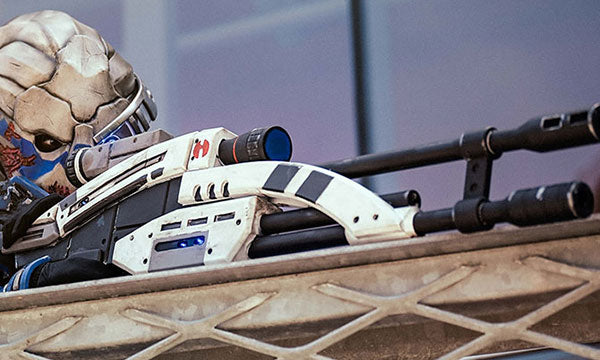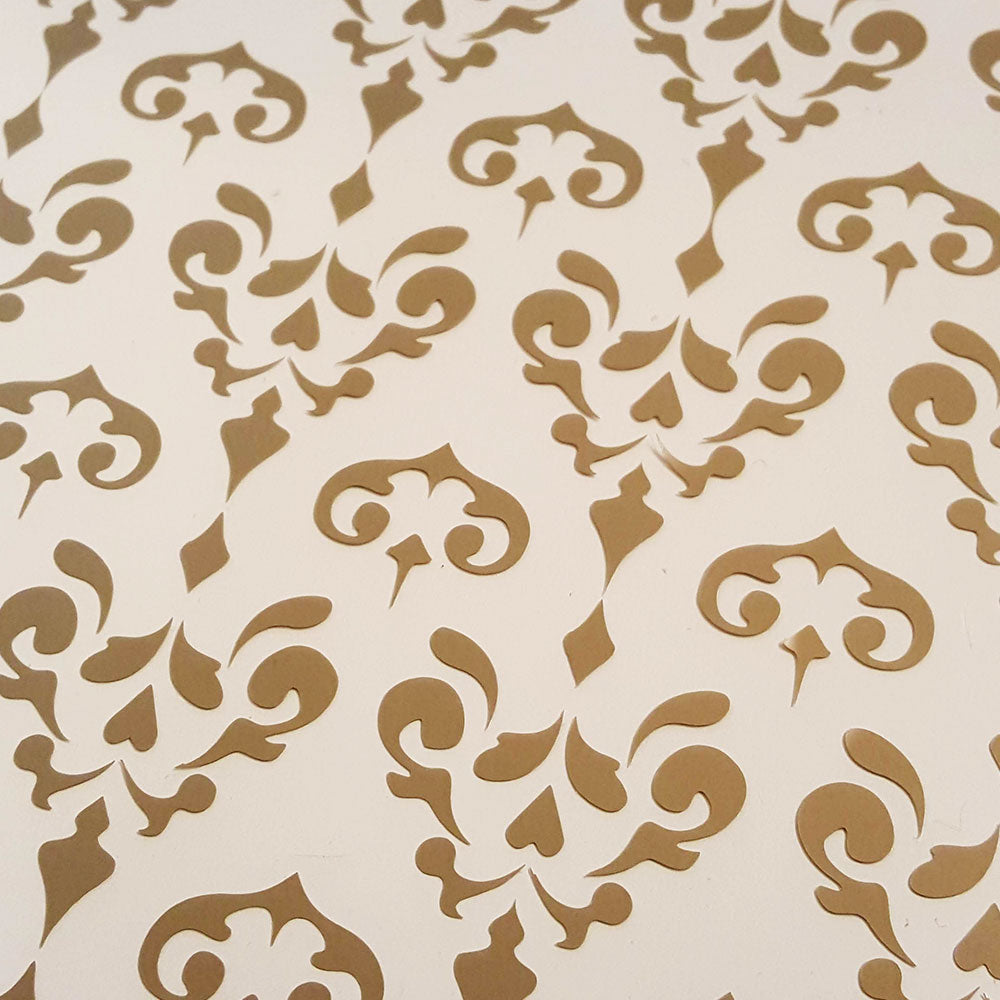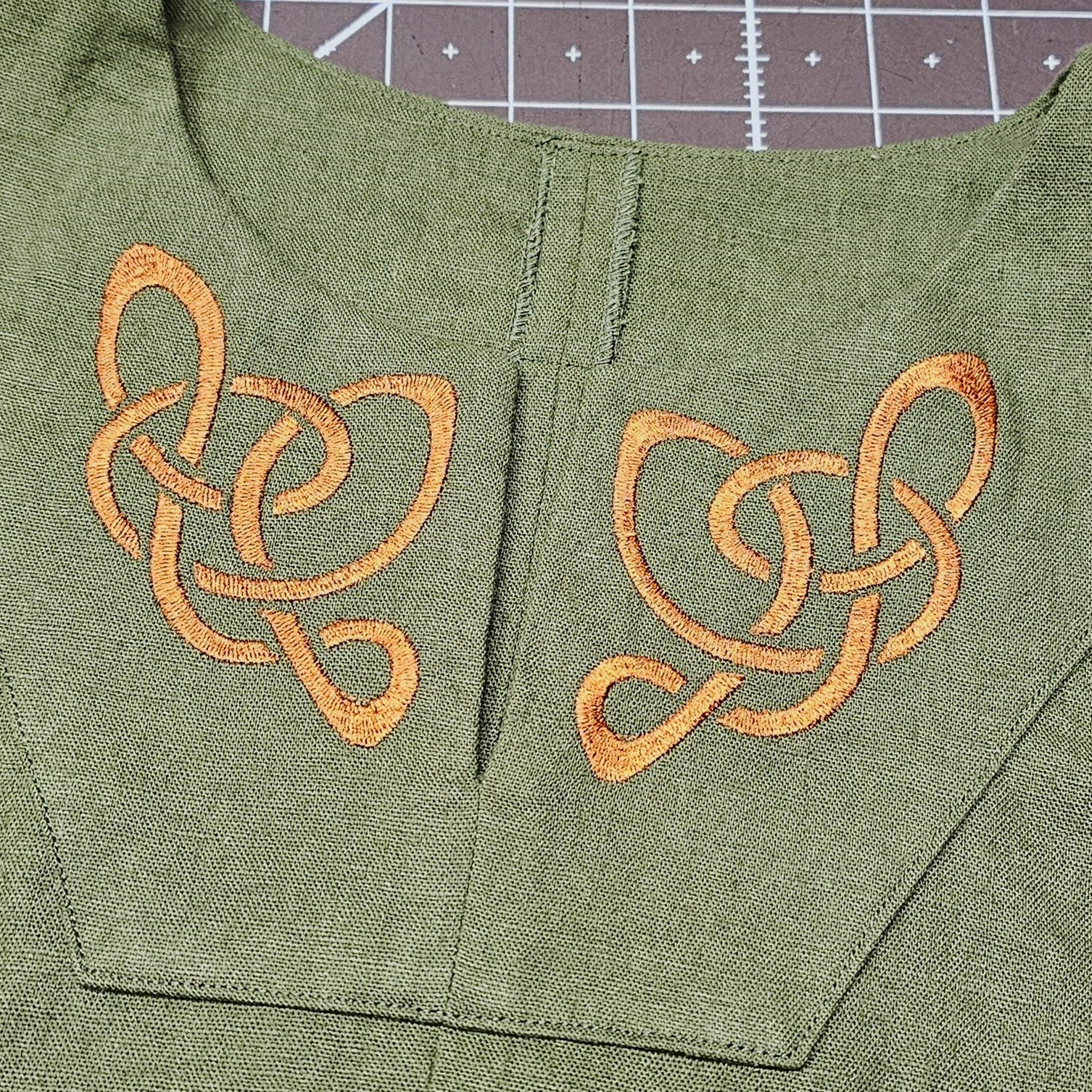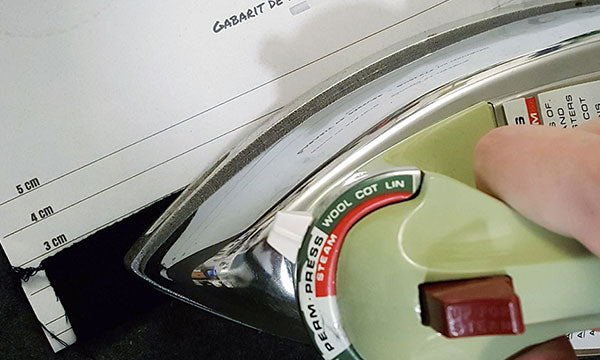Downloadable patterns ... Everything you wanna know
Are you a fan of PDF patterns? Do you buy your patterns online? Or are you still used to going through catalogs in fabric stores to choose a new pattern?
Maybe you've already wanted to buy a downloadable pattern, but you're not sure what you'll need to do next to have a ready-made pattern in your hands.
So you don't really dare to take the plunge.
Personally, I really like PDF patterns. And above all, I like less store-bought patterns, made from tissue paper which doesn't tolerate the slightest sideways glance... In addition to the fact that I hate the thin paper of big brand patterns, I love the endless options of online patterns. We have so much access to lots of great deals. No matter what we need.
And if you do more or less sewing, but you do crafting (whether it's cardboard, EVA foam or other), there are also a bunch of patterns adapted to these projects. Awesome, right?
✂ Psst! I offer all kinds of pattern types downloadable in my store.
Whether it's because you're not too tech-savvy, or you just want a quick overview. I share with you, in detail, all the steps of purchasing a digital pattern:
- download;
- file backup;
- open file;
- choice of size;
- impression;
- assembly of pages;
- copy center printing option;
- checking parts;
- path to follow;
- materials and tools;
- canvas testing and adjustments;
- creating your project
- preservation of the pattern;
- ethics and copyright
Download
The first step, once you have purchased your pattern, is obviously downloading.
From one online store to another, it doesn't always happen in exactly the same way, but you can, quite often, recover your file quite instantly.
There is still one little thing that is quite important: make sure you have easy access to your boss. It may seem obvious like that, but if you don't know where your computer saves automatic downloads, you'll have to search for a long time...
Also make sure to at least keep the purchase confirmation email. Mark it as important, make a special folder in your email box… but don't delete it! Normally, you will have the download link in this email too. And if the download link is not there (or it expires - which is also quite common), you will at least have your order number to make a request to the store. Because yes, no order number, it's always a little more complicated...
Be careful, I have already seen stores that do not allow multiple downloads. This means that, once you have downloaded your file, it’s finished. The shop considers that you have it. And if you lose it, you have to buy it again.
I understand the idea: if you buy a McCalls pattern at Fabricville, and then forget it on the bus on the way home, it's not really the store's problem. It's sad, but it's not their fault...
Therefore, I strongly suggest that you do a little check on the online store to find out their methods.
✂ My patterns are infinitely downloadable. 🤓
If you lose your files and can't find your download link, write to me! We will find a solution.
Saving the file
Ok, you have your file in hand. Great. But just before going any further, I want to give you a little unsolicited advice. Classify your stuff properly on your computer. OK? I know, I just told you that it's possible (most of the time) to re-download your pattern if you lose it, but that doesn't mean you want to go back and download it 25 times.
Create a folder dedicated to your PDF patterns . It will save you time later.
Opening the file
There, I can hear you saying “ Okay, that’s okay. I double-click, and we don't talk about it anymore... " I agree with you, but there are still a few mini details to know:
ZIP files
If you downloaded a ZIP file, don't forget to extract the files . This is important to ensure you can clearly see all the files included in your purchase.
And it's super simple. On PC, you just have to right-click on your document and choose the “extract all” option.
On Mac, you double-click and voilà!
PDF files
To open a PDF document, you need an application that can read these files. Attention! If you don't have a dedicated program on your computer, the files may open in your browser by default. And you don't want that.
For what? Because you're going to have size problems when printing. *I've done some testing, and unfortunately Chrome and Firefox don't really print at 100% when they say they print at 100%. And that's a problem. Because it will change the size of your pattern.
My suggestion: Adobe Acrobat Reader. It's free, and you're sure to be able to print your pattern and choose the layers you want to print, if the option is available (I'll explain later).

Size choice
Before printing your pattern, you need to choose your size. Why before? Because some pattern brands offer you the option to print just the size you want. And that’s really nice because you won’t get mixed up in the different lines of different sizes. Practical, right?
✂ Yes! My patterns are separated into layers. 🤓
All you need to do is open the layers tab and deselect the sizes you don't want. They will simply be hidden and you will be able to print just your size.


So, choose your size before printing your pattern.
To do this, you have to rely on the size chart from the pattern store.
No, you can't say to yourself: “I'm wearing small, I'm going to print small”. Because we all know that the small of one brand is the medium of the other... So, take the time to check the size chart ( normally the information is included with the pattern) and make sure you print the correct size for you.
✂ I have a size guide on my website (including the different size charts depending on the types of patterns).
I also include a size chart in the instructions that come with each of my patterns.
*If you want to take your measurements carefully, I have an article on how to take your measurements like a boss!
Impression
Okay, now we're ready to print...
The correct file
Depending on where you live in the world, the standard paper size (for printing your pattern at home) is not the same. Here, in Quebec (and in Canada in general), we have letter paper, like in the United States. But in Europe (and many other places), the standard format is A4 paper.
Take the time to make sure you have the correct file for your paper type before continuing. If there are several files for the same pattern, it is generally to accommodate the different paper formats.
The right size
Next, make sure you're going to print at “actual size” (or 100%). That's one of the most important things. If not, your pattern will not be the right size. And a pattern that’s not the right size isn’t as practical, right?
Also take the time to make sure the orientation is in automatic mode . This will ensure that the print is well centered and that you don't lose any ends.

Most PDF patterns have a small square somewhere (usually on the first page) that you can measure to make sure everything is ok. Take 2 seconds to be sure that you have printed the pattern at the right size.

Assembling the pages
If you have just bought a pattern to make a small stuffed animal, a Viking helmet, or a purse, the chances are that the pieces will fit quite well on your letter (or A4) size sheets.
On the other hand, if you are about to make pants or a dress, the pattern pieces are certainly larger than the sheets that go through your printer, right ?
You will therefore have to assemble the pages of your pattern to create the pieces:
📌 Sit on a large enough surface.
You want to be able to spread everything out (or at least see several rows of leaves at once). It's easier to align the pages correctly if you can see what you're doing.
📌 Don't mix your leaves too much.
Normally, they should already be in order, but there is usually pagination too (often with numbers and letters, for rows and columns).

📌 Check how you should put the pages together.
This can be by placing them side by side or by overlapping them (by aligning landmarks). The methods vary from one brand of pattern to another, so take a look at the instructions to make sure you're doing it right.
📌 Glue the pages together.
I recommend transparent sticky paper, one that is soft to the touch. That way, if you take notes on your boss, it writes well.
By the way, if the pages are assembled without superposition (side-by-side), it is completely normal for there to be a small gap at the edge of the pages. Home printers generally don't print all the way to the edge.
It can also happen that certain lines between pages do not fit perfectly. The sheets in your printer may move a little, this is normal. As long as the offset isn't too big (a few mm), you'll just have to retrace your line, and everything will be swell.

✂ My patterns are not all made the same... Before, I preferred to place the pages side by side (it's faster). But since it's a bit less precise, I'm in the process of changing it to overlapping pages, with precise reference points.
Don't worry, it's specified in the instructions what you should do. 🤓

*Copy center printing option
Some digital pattern stores also offer the option of printing your pattern on A0 paper, in a copy center .
The advantage of this format is the time you will save on assembling the pages. Since the sheets are super large, there is no need (or almost no need) to assemble pages.
On a very large costume (like a mega cape), you will still have a bit of page assembly to do... but assembling 2 or 3 large pages is still simpler than assembling 70 .
The downside is an additional expense. It's not super expensive, but it's still a little more expensive than printing this at home. If you're tight on your budget, this may be an expense you'd prefer to avoid...
Speaking of price, I strongly recommend that you shop around for your printer. In my experience, large chains often charge more for this type of service than small local printers.
If you are in Quebec, I recommend the printing service from Atelier Espace Fabrik.
*Note that in Canada and the United States, the A0 format is not very common. In standard copy centers, they will instead have Arch E size paper (36" x 48"). It is a classic North American paper size, a little larger than A0 format. You can therefore have your pattern printed on Arch E, without problem.
✂ Yes! My patterns are also available in A0 format. 🤓
Checking parts
Whether you're about to make a costume with a pattern you downloaded or you're using a physical pattern, this step is important: Take the time to check your pattern pieces.
Do you have all the pieces?
Do you understand the pieces?
Most brands will list you all the parts included in the model. Hover over and confirm that you have all the pieces. There's nothing uglier than realizing halfway through creating a costume that you're missing a piece.
You can also loosely assemble the pattern by placing the pattern pieces against each other. It's a good way to make sure you know where you're going, and that you understand the license.
The instructions
Before you even start cutting anything, take the time to read the instructions . This will allow you to:
- See if you understand everything.
- Make sure you have all the tools requested.
- Confirm that you have all the materials
- Check if you want to make changes to the pattern
- Understand each of the pattern pieces (tsé, if in the step before you weren't 100% sure)
The quantity of information, the type of details and the format in which it is transmitted vary greatly from one boss to another. From one company to another.
There are patterns that come with lots of details on how to put together your project. Others who assume that you know how to sew and that you just need to put a little order into the steps.
Sometimes the manufacturing stages are in photos. Sometimes it’s illustrations. Sometimes it's just text.
Crafting patterns are often simpler, with shorter steps to follow. We often assume that you already know a little bit about where you're going (and that the important thing is to know which piece goes where).
Either way, no matter the type of boss, do a check up and make sure you have everything you need. And that you understand everything.
✂ Personally, I like to give you a lot of information and I know you're probably very visual. So I try to write clear, complete instructions, with photos.

Materials and tools
Most patterns will suggest types of fabric and list the haberdashery you need (buttons, elastics, etc.). Some will even list the tools.
I already told you, take the time to go through the steps. Among other things, to make sure you know why you need the different elements. It can even help you find alternatives if you don't have everything you need.
It’s a bit like making a plan when you start a cosplay project. It's really a good practice to list everything you think you'll need. You have fewer surprises afterwards.
If the information is not included with the pattern you purchased, it is even more important to read the instructions. Then, make a list and keep it with your boss. That way, you'll know if you ever do a project again with the same boss.
Test canvas and adjustments
There, you're ready to start... or almost.
Make a canvas, a mock up, a test .
Whatever you call it, test your pattern before cutting everything and putting together your project in your final fabric (or material, whatever it is).
The sizes and shapes of a pattern are standardized. It's completely normal that the pattern is not per-fai-te-ment adjusted to your proportions. That’s why you make a canvas. This will allow you 2 things:
- Test the shapes, measurements and proportions of the pattern. And adjust the model as needed.
- Test the assembly. And understand in what order to do things, which steps are more complex and which techniques you may need to practice a little before making the final version.
Making a canvas feels like a waste of time for a lot of people. But I can guarantee you that you can avoid a lot of headaches and nightmares if you take the time to make a canvas before really starting your project.
By the way, if you need, I have an article full of tips for properly cutting your pattern (whether for your canvas or for your final project).
Creating your project
Once you are satisfied with your canvas, you can finally cut into your beautiful fabric and make your project.
Attention! Make sure to prepare your fabric well< /a> before cutting your pattern pieces.
I know, it seems like a long and arduous process. But, I swear, if you take the time to prepare your things well, creating your costume will be really easier.
Take your time. Apply yourself. It's going to be super hot! 😊
Keeping your boss
Because, once you've finished your project, you have to do something with this beautiful boss.
You want to keep it, and you don't want to have to redo all the preparation the day you want to reuse the pattern, right ?
Store your pattern quickly after your project. Because if you leave it lying around for a couple of weeks, chances are that you'll lose pieces... We both know, there are gnomes who live in our workshops, and who steal things who are lying around.
Slip all the pieces into a large envelope, and clearly write what the pattern is (even better, if you have a picture). Worse, you can even slip in your current measurements (well, in case you change a little).

As for me, my patterns are stored in a binder. I like being able to browse by categories. But if not, a box where you can put all your patterns does the job. As long as it's easy to go see what you've got.
By the way! Don't be afraid to take notes directly on the pattern (you know, the kind of thing that doesn't work as well on a tissue paper pattern, right?). It will help you remember details that you should not forget.
- Write where you adjusted.
- Note how you finished.
- Add annotations if there are more complex parts.
Futur-you will be happy to read this little information.
Ethics and copyright
Well yes, a PDF file is easily shared... But remember, there is a lot of work behind a pattern purchased online (whether mine or those of other creators or companies).
A lot of effort was put into creating the pattern, testing it, adjusting it, transforming it, retesting it, assembling the different sizes, preparing the file so that you can easily print it at home, not to mention the writing. of the procedure to follow…
So out of respect for the creator behind the product, please keep your pattern to yourself .
It’s not made for distribution.
It’s definitely not made for resale.
Psst… If you are making an order for someone. That you create a costume that you are going to sell… It’s okay if you use my pattern. My boss is a tool. Don't resell my tool. But you can sell the fruit of your work done with the tool I provided you. 🤓
Finally, if you want to make someone happy, share your creation on social networks, tagging the creator of the pattern you used. I guarantee you will brighten up his day.
In any case, I will do a happy dance if you do it. 😊
We'll talk soon.
in the meantime… Keep on crafting!
🤓✂🐙











